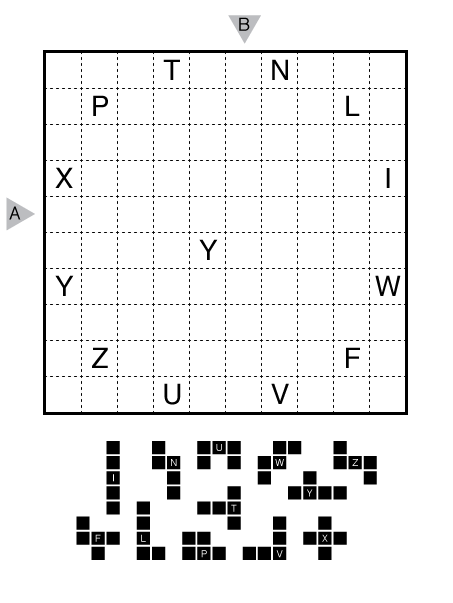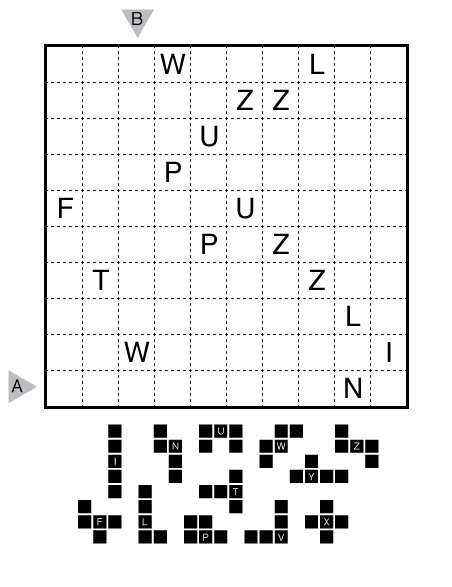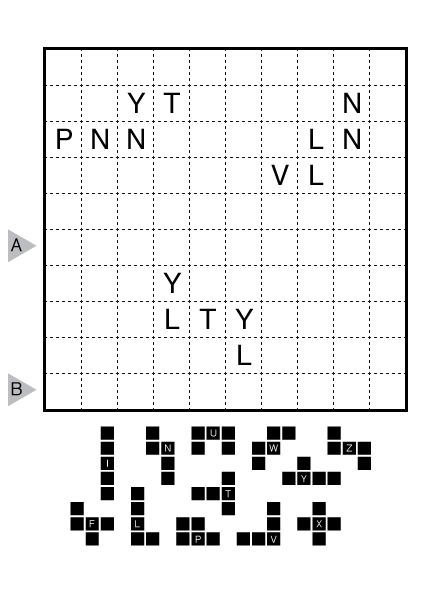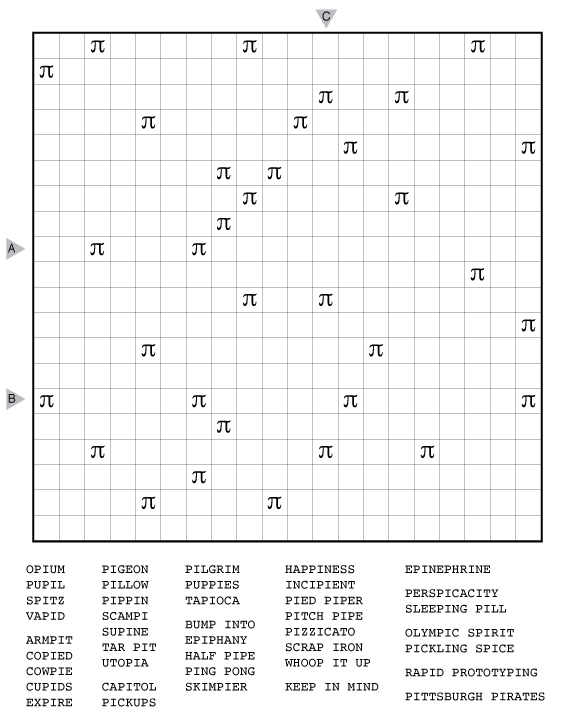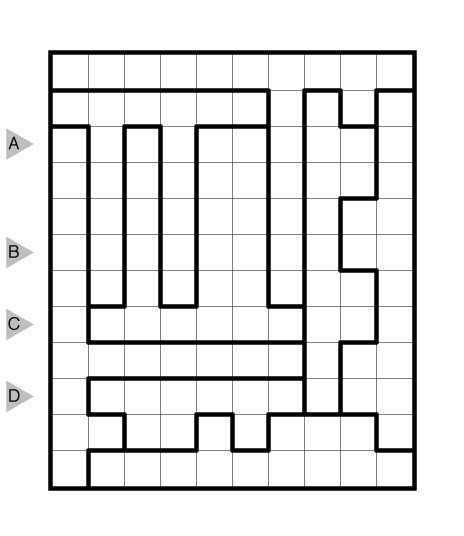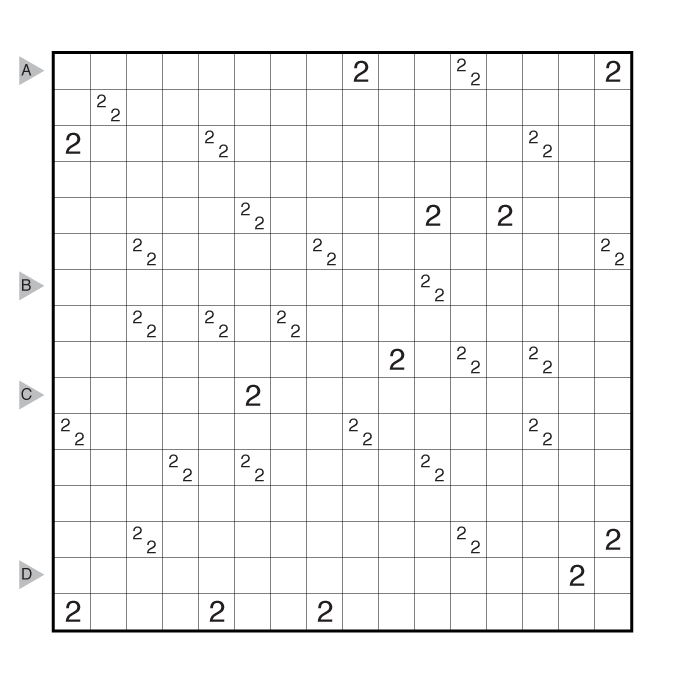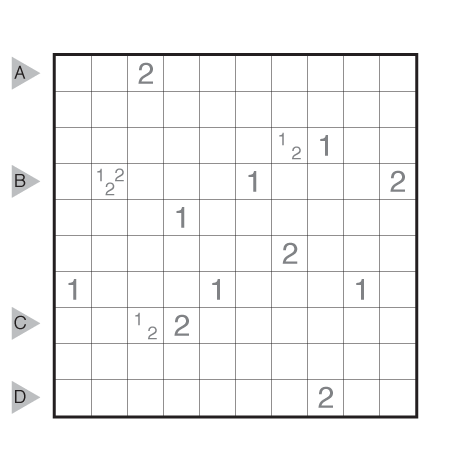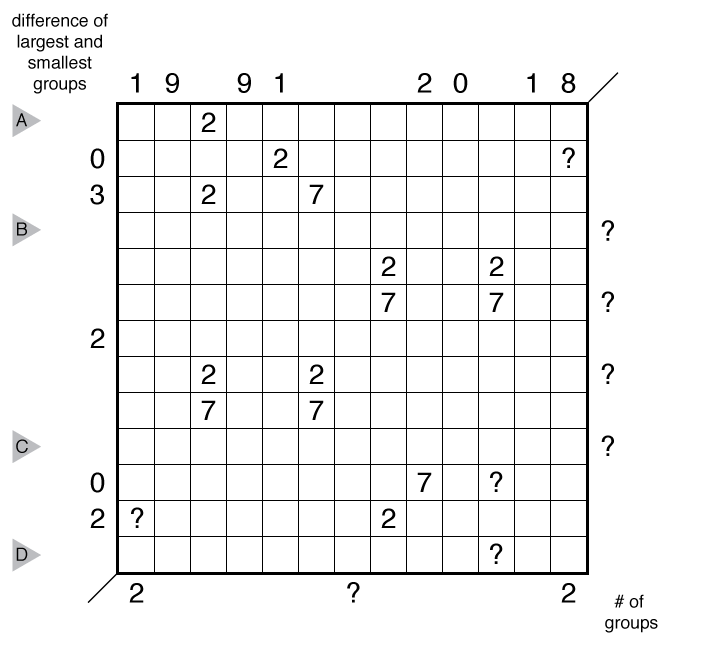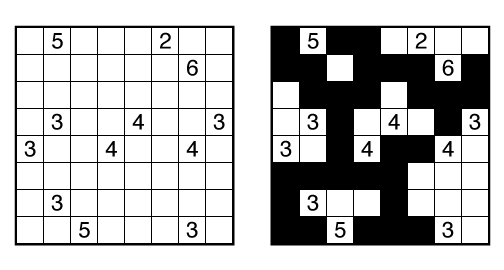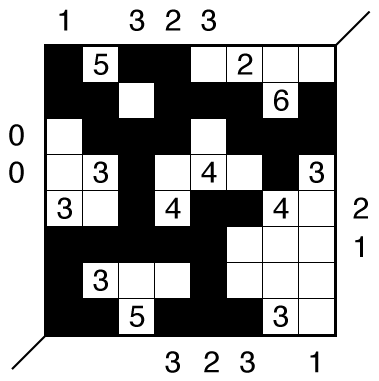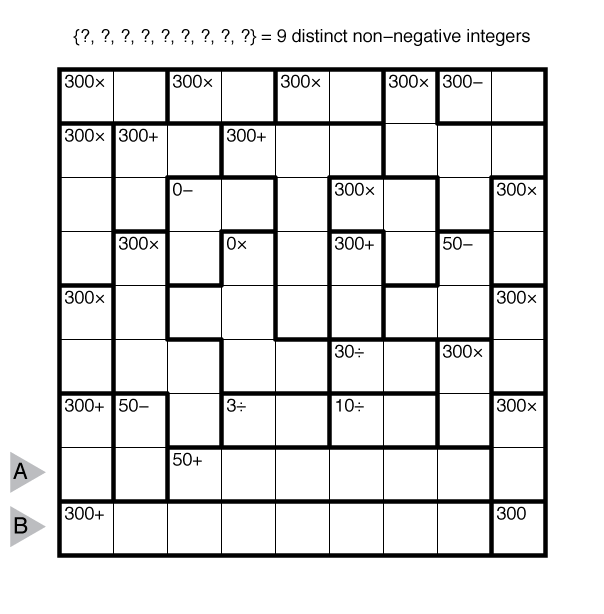Yajilin (Pentominoes) by Murat Can Tonta
While not a Pentominous puzzle, we wanted to share a cool Pentominoes loop puzzle variant from Murat this week, who is a co-author with Grant Fikes of Plenty o’ Pentominous, released this week.
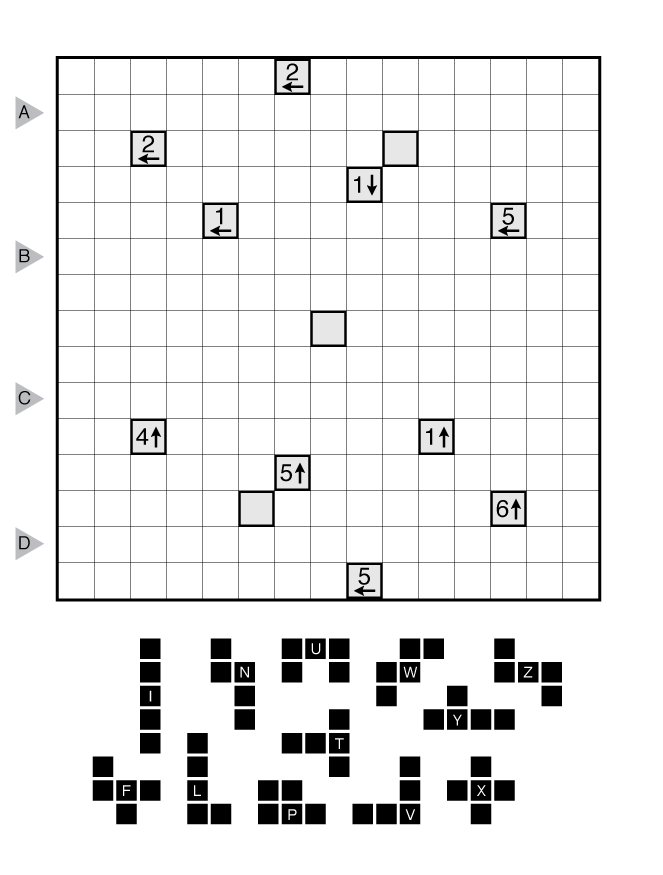
(view directly for a larger image)
or solve online (using our beta test of Penpa-Edit tools)
Theme: Clue Symmetry and Logic
Author/Opus: This is the 86th puzzle from our contributing puzzlemaster Murat Can Tonta.
Rules: Variation of Yajilin. Place the twelve pentominoes into empty cells in the grid (rotations and reflections allowed). No two pentominoes can share an edge. The numbered arrows indicate the number of cells that are parts of pentominoes in the given direction. Then draw a single closed loop (without intersections or crossings) through all remaining white cells as in a Yajilin.
Answer String: Enter the length in cells of the horizontal loop segments from left to right in the marked rows, starting at the top. If the loop only has vertical segments in the marked row, enter 0. Separate each row’s entry with a comma.
Time Standards (highlight to view): Grandmaster = 8:00, Master = 12:30, Expert = 25:00
Solution: PDF
Note: Follow this link for other variations of Yajilin and this link for classic Yajilin. If you are new to this puzzle type, here are our easiest Yajilin to get started on. More Yajilin puzzles can be found in The Art of Puzzles 2.

